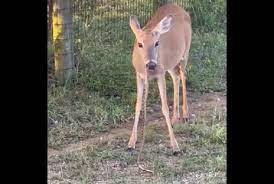Many species of animals have become extinct from the wild through the course of time. However, conservation scientists managed to bring back some extinct species or save endangered animals using translocation and captive breeding to re-establish the animal population. Through this way, scientists have and are helping to restore the degraded ecosystems and increase population numbers.
These are five of some species that scientists have managed to bring back and save:
Also Read | Finland rallies to save one of the world’s most endangered seals
Eurasian Lynx

Thanks to a series of reintroduction programs, which started in the 1970s, the Eurasian lynx that became extinct across Central Europe since the 1800s has returned to several nations, including Switzerland, France, Italy, Austria, and Germany.
According to a CNN report, the fragmentation of these populations is still a barrier while conservationists are exploring ways to connect animals who are scattered in isolated groups across the continent.
Also Read | Mouse declared extinct 150 years ago found on an isolated island
Tasmanian devil

The Tasmanian devils were forced out of Australia when dingoes arrived nearly 3,00 years ago. After which the marsupials were only found on the island state of Tasmania as their number decreased after Devil Facial Tumor Disease (DFTD), a contagious form of cancer killed 90% of the remaining population of the Tasmanian devils.
However, the marsupials were, in 2020, reintroduced in Australia’s New South Wales with a small breeding population.
Steppe Bison

The Steppe bison went extinct in England around 10,000 years ago. Now, the Kent Wildlife Trust is leading a project to bring back the European bison that close relative of Steppe bison. The project hopes that the “ecosystem engineers” will help to revive Kent’s ancient woodland as the first herd of bison will be released in 2022 into woods near Canterbury.
Also Read | World’s smallest hog released into wild in India
Arabian Oryx

The Arabian oryx, which were adapted to survive in harsh conditions, went extinct from the wild in the 1970s. The species were hunted for their meat, hide, and horns. The Arabian oryx has been reintroduced in Israel, Oman, Saudi Arabia, Jordan, and the United Arab Emirates. The IUCN has estimated nearly 1,200 animals of the species are living in the wild. The species is now “vulnerable”, as the IUCN changed its status from “endangered” in 2011.
Black Rhino

The population of black rhino was less than 2,400 in the wild by the 1990s. But conservationists have more doubled their numbers through their reintroduction programs to bring back rhino to the nations and communities where it was entirely extinct.






